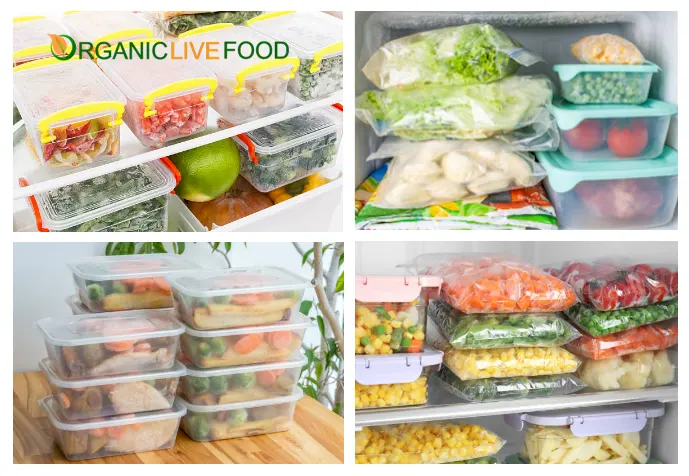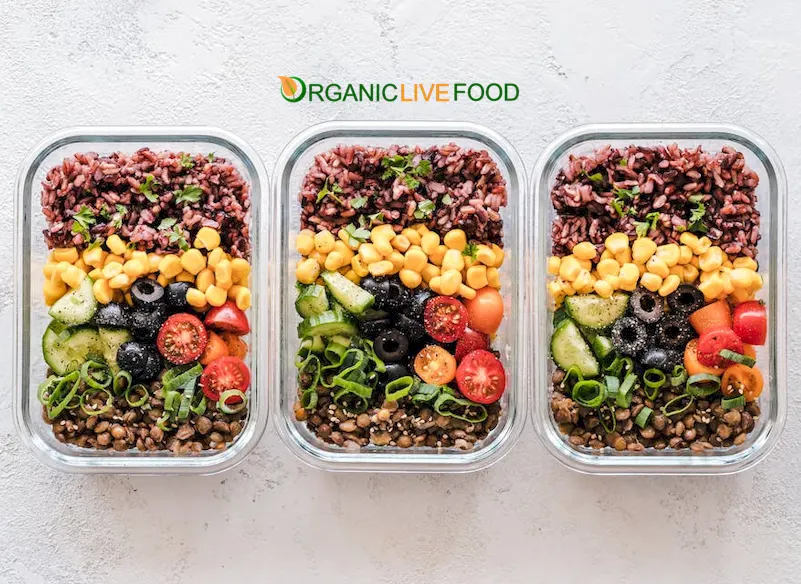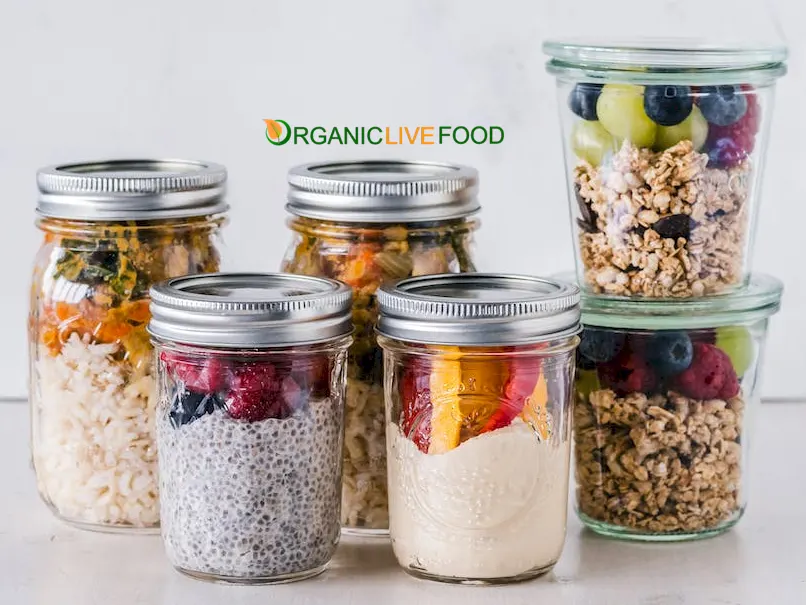The easiest way to eat and drink healthy foods and beverages
- Posted/Updated: December 23rd, 2025
The easiest way to eat healthy foods is to prioritize simplicity and consistency. Begin by incorporating whole, unprocessed foods such as fruits, vegetables, lean proteins, whole grains, and healthy fats into your meals.
Focus on creating balanced plates with a variety of colors and nutrients.
Listen to your body's hunger and fullness cues, and practice mindful eating to truly savor and appreciate the nourishing foods you consume.
By adopting these strategies, eating healthily can become a seamless and enjoyable part of your lifestyle.
Planning ahead and preparing meals in advance can streamline the process, ensuring that healthy options are readily available when hunger strikes.
Making small, sustainable changes to your diet over time rather than attempting drastic overhauls can lead to long-term success.
The easiest way to eat healthy foods is to prioritize simplicity and consistency
Preparing meals ahead of time not only saves time and effort but also ensures that healthier options are readily available, reducing the temptation to opt for convenience foods or unhealthy snacks.
Buy some extra plastic containers and resealable plastic bags. Cut up vegetables, and store in these containers. You can also store soups, brown rice, or even sandwiches.

- Carrots
- Carrots can be sliced or cut into sticks and stored in a container of clean filtered water to maintain crispness, or even in just an empty sealed plastic container in the fridge. They typically last 1-2 weeks when stored this way.
- Celery
- Cut celery sticks or slices can be stored in a container of water in the fridge, maintaining freshness for up to 2 weeks. Otherwise, without water, about a few days.
- Bell Peppers
- Sliced bell peppers can be stored in a plastic container for 5-7 days, although they may start to lose crispness over time.
- Cucumbers
- Sliced or chopped cucumbers can be stored in a plastic container for 3-5 days, maintaining their crisp texture and flavor.
- Broccoli and Cauliflower
- Cut broccoli and cauliflower florets can be stored in a plastic container for 5-7 days. It's best to store them in a perforated plastic bag or with a paper towel to absorb excess moisture.
- Radishes
- Sliced or halved radishes can be stored in a plastic container with a damp paper towel for 1-2 weeks, maintaining their crispness.
- Cherry Tomatoes
- Cherry tomatoes can be stored in a plastic container for 3-5 days, although they may last longer if kept at room temperature.
- Soups
- To keep soups fresh in the fridge, it's essential to cool them down quickly after cooking to minimize bacterial growth. Once the soup has cooled to room temperature, transfer it to shallow containers or divide it into smaller portions to help it cool faster. Cover the containers tightly with lids or plastic wrap to prevent any potential contamination from other foods in the fridge and to retain moisture.
- Store the soup in the refrigerator promptly, preferably within two hours of cooking, and consume it within 3-4 days for optimal freshness. When reheating, ensure the soup reaches a rolling boil to kill any bacteria and always use clean utensils to prevent cross-contamination. If you're planning to store soup for longer periods, consider freezing it in airtight containers or freezer bags for extended freshness.
- Brown Rice
- To keep cooked brown rice fresh in the fridge, it's crucial to cool it down quickly after cooking to minimize bacterial growth. Once cooked, spread the brown rice out on a baking sheet to allow it to cool evenly before transferring it to an airtight container or resealable plastic bag.
- Store the cooled rice in the refrigerator promptly, preferably within two hours of cooking, to prevent the growth of harmful bacteria. Properly stored, cooked brown rice can last in the fridge for 4-6 days. When reheating, add a splash of water to prevent it from drying out, and ensure it reaches an internal temperature of 165°F (74°C) to ensure food safety. Additionally, always use clean utensils and avoid cross-contamination to maintain the rice's freshness and quality.
- Sandwiches
- To keep sandwiches fresh in the fridge, it's essential to wrap them tightly in plastic wrap, (ideally with parchment paper to prevent moisture loss first) and maintain their integrity. Layer ingredients strategically, placing sturdier fillings like cheese and meats closer to the bread to create a barrier against moisture-prone ingredients like lettuce or tomato.
- Even better, store the wrapped sandwiches in an airtight container or resealable plastic bag to further preserve freshness and prevent the absorption of odors from other foods. Aim to consume the sandwiches within 2-3 days for optimal flavor and texture.

By simplifying your approach to eating, focusing on whole, unprocessed foods, and consistently making healthier choices, you can establish sustainable habits for long-term wellness.
Planning meals in advance allows you to anticipate nutritional needs, make thoughtful food choices, and avoid impulsive, less nutritious options.
Additionally, preparing meals ahead of time not only saves time and effort but also ensures that healthier options are readily available, reducing the temptation to opt for convenience foods or unhealthy snacks.
By embracing simplicity, consistency, and strategic meal planning, you can make eating healthily a seamless and enjoyable part of your lifestyle.
- Plan Your Meals
- Take a few minutes each week to plan your meals and snacks. This helps you make healthier choices and reduces the likelihood of impulse eating.
- Stock Up on Healthy Foods
- Keep your kitchen stocked with nutritious options like fresh fruits, vegetables, whole grains, lean proteins, and healthy fats. Having these foods readily available makes it easier to make healthy choices.
- Portion Control
- Be mindful of portion sizes to avoid overeating. Use smaller plates, bowls, and utensils to help control portion sizes without feeling deprived.
- Eat Mindfully
- Pay attention to what you're eating and enjoy every bite. Eating mindfully can help you recognize when you're full and prevent overeating.
- Stay Hydrated
- Drink plenty of water throughout the day. Sometimes thirst can be mistaken for hunger, so staying hydrated can help curb unnecessary snacking.
- Limit Processed Foods
- Minimize your intake of processed and packaged foods, which are often high in unhealthy fats, sugars, and sodium. Opt for whole, unprocessed foods whenever possible.
- Incorporate More Plant-Based Foods
- Aim to include more plant-based foods in your diet, such as fruits, vegetables, legumes, nuts, and seeds. These foods are rich in nutrients and fiber, which are important for overall health.
- Cook at Home
- Cooking meals at home allows you to have full control over the ingredients you use and the cooking methods employed. This can help you make healthier choices and avoid hidden unhealthy ingredients.
- Practice Moderation
- Allow yourself to enjoy your favorite treats occasionally, but in moderation. Depriving yourself completely can lead to feelings of deprivation and eventual binge eating.
- Seek Support
- Surround yourself with supportive friends and family members who encourage your healthy eating goals. Consider joining a cooking class or a support group to stay motivated and accountable on your journey to better health.
If you want to make your life even easier, then you can always order fresh healthy foods and beverages delivered to your door through one of the top 20 healthy food delivery services in U.S. and many of them have service in Canada as well. Others have delivery services in U.K., France, and Germany or have affiliates that delivery througout Europe and Australia.



